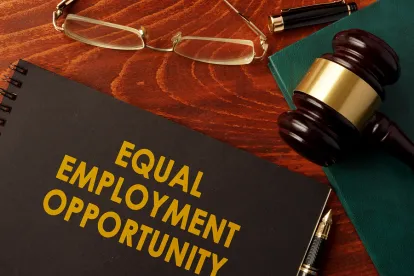It’s one of those days. An envelope containing a charge from the U.S. Equal Employment Opportunity Commission (EEOC) arrives on your desk. The charging party is a recently departed employee, and it’s the company’s first notice of the complaint. The former employee checked the harassment box (but no others), alleging that she had been sexually harassed by a supervisor on two occasions. There is no mention of witnesses and it seems as if it could be an isolated matter. Will the EEOC agree?
Here are a few actions to consider taking at the outset:
-
Review the charge closely and confirm the individual’s dates of employment, positions held with the company, and the circumstances of her departure.
-
Confirm similar information about the alleged harasser. Request the personnel and supervisor files, and review other information as needed.
-
Notify human resources and other senior executives of the pending matter.
-
Provide the charge to HR along with a request to thoroughly investigate the complaint and call you with their findings so that you can provide further legal advice.
-
Draft and disseminate a thorough letter instructing all relevant departments and key individuals to preserve all information, data, and evidence related to the matter.
-
Request that the EEOC investigator give you a two-week extension of the charge response date.
-
Review the allegations to assess the risk of a broader EEOC investigation into “systemic harassment.”
Systemic Harassment
Systemic harassment involves a pattern or practice of harassment that has a broad impact on the workplace. The scope of an EEOC investigation can expand beyond the harassment alleged by a charging party when the charge “raises the specter” of widespread harassment. Consider the following examples:
-
The charge mentions that other employees may also have been harassed by the same supervisor.
-
The charge suggests that other managers or supervisors knew about the offensive conduct and failed to take steps to report it or correct it.
-
The charge mentions social media sites where the charging party and other employees have discussed similar concerns about harassment at the company.
-
The charge is among a number of other recent charges filed by other current or former employees making similar allegations.
Generally, the EEOC reads such charges as indicative of systemic harassment and may broaden the scope of the investigation beyond the individual charge. Instead, the investigator may look into whether there is a widespread problem of harassment at the company. This risk of a broader investigation should always be considered when you prepare your response to a charge, no matter how isolated or sporadic it may first appear.
In general, there is an EEOC presumption against the idea of a single victim of harassment in the workplace. A recent report from the Commission states:
Common workplace-based responses by those who experience sex-based harassment are to avoid the harasser, deny or downplay the gravity of the situation, or attempt to ignore, forget, or endure the behavior. The least common response to harassment is to take some formal action—either to report the harassment internally or file a formal legal complaint. Roughly three out of four individuals who experienced harassment never even talked to a supervisor, manager, or union representative about the harassing conduct.
So for every harassment charge filed, the Commission generally presumes that there are several more harassment victims in the workplace who declined to even discuss it with management, much less file a formal charge with the EEOC.
The Commission goes on to state in its report that “approximately 90% of individuals who say they have experienced harassment never take formal action against the harassment, such as filing a charge or a complaint.” Considering that the EEOC receives about 90,000 charges each year that allege workplace harassment, the Commission estimates that hundreds of thousands of other harassment incidents occur each year that are not reported in a formal charge.
To combat widespread harassment in the workplace, the Commission emphasizes “preventing harassment through systemic enforcement” as one of its six key national priorities. These broad investigations significantly increase the employer’s risk of liability, both in the likelihood that the Commission will find that legal violations occurred, and in the larger scale of the violations. For example, while less than 5 percent of all charges result in a “reasonable cause” finding, the EEOC finds reasonable cause in 41 percent of its systemic investigations.
Key Takeaways
With the EEOC’s renewed focus on combating systemic harassment and the ease with which an individual charge could make a company the target of a widespread investigation, corporate counsel should fully appreciate these risks when preparing a comprehensive response to a charge. Not only is the individual charge at issue, the company’s entire harassment prevention program may be scrutinized. In my next post, I’ll discuss some best practices for the charge response.
Part 2 - 5 Harassment Prevention Principles to Highlight in a Response




 />i
/>i
